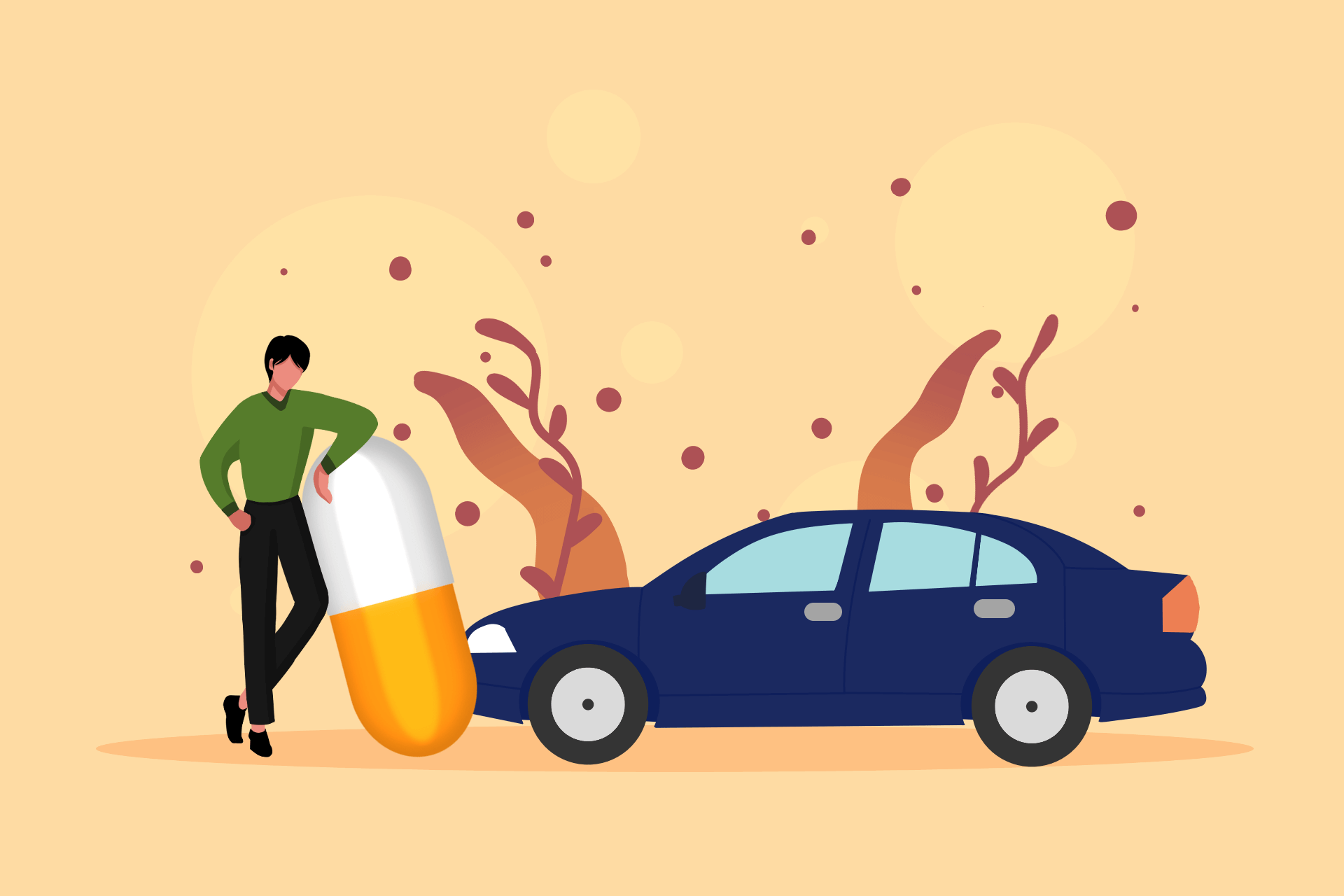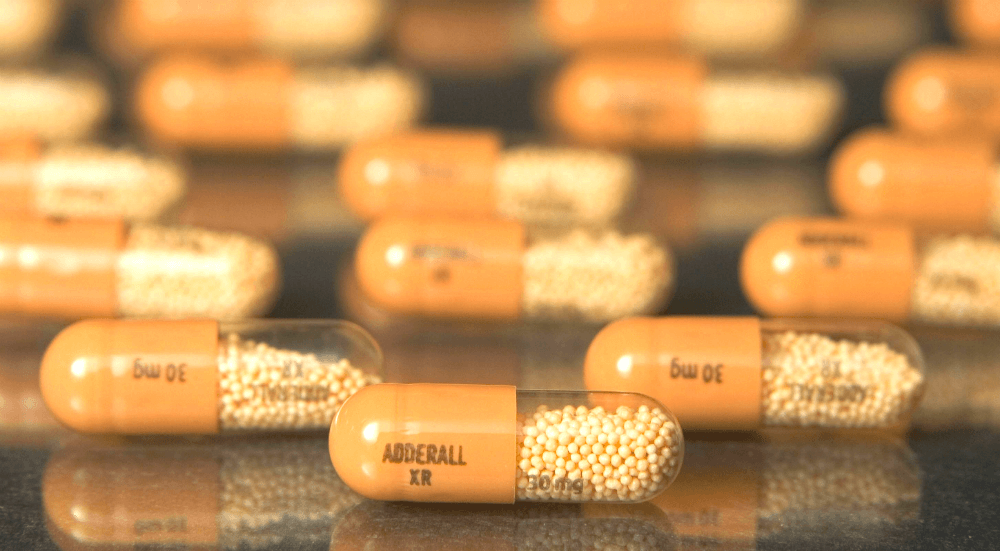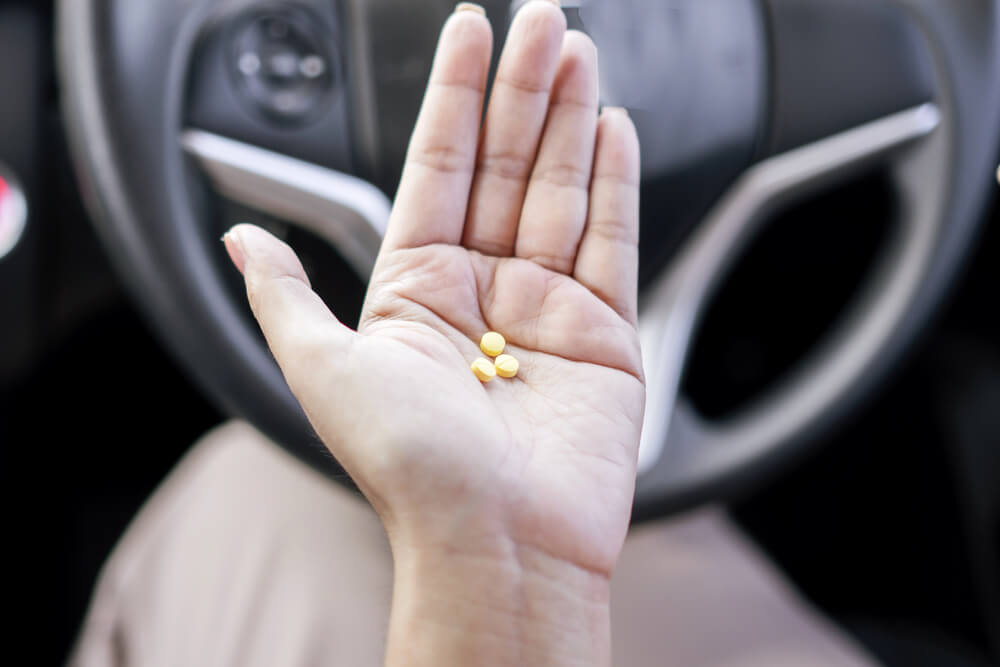Your doctor may have prescribed Adderall to manage your ADHD, but a critical question arises: Can you drive on Adderall? Is it allowed under the law, or is it illegal if it impacts your driving? Even when taken as directed, could it still lead to a DUI (driving under the influence) arrest if it affects your performance behind the wheel?
This guide explores the reality of driving on Adderall—how it might help your concentration and expected dangerous side effects. It breaks down what Adderall is and how it works, whether it helps or hinders driving skills, the legal consequences of driving under its influence, and practical tips for staying safe on the road after taking Adderall. Let’s dive in.
What Is Adderall?
Adderall is a prescription stimulant med that contains a carefully balanced mix of four amphetamine salts—three parts dextroamphetamine to one part levoamphetamine—designed to stimulate the central nervous system. The FDA has approved it for treating attention deficit hyperactivity disorder (ADHD) in patients aged 3 and older, as well as for managing narcolepsy, a chronic sleep disorder characterized by overwhelming daytime drowsiness [1].
While primarily prescribed for these conditions, doctors sometimes recommend Adderall for off-label uses. These include augmenting treatment for depression that doesn’t respond to other medications, combating severe fatigue in chronic illnesses, and, in rare cases, aiding weight loss by suppressing appetite.
Originally introduced in the 1960s as an obesity drug called Obetrol, Adderall was reformulated and repurposed, gaining FDA approval for ADHD treatment in 1996 [2]. Today, it’s available in both immediate-release (lasting 4–6 hours) and extended-release (XR) versions (lasting up to 12 hours), allowing for tailored treatment plans based on individual patient needs. Its unique amphetamine salt composition helps regulate neurotransmitters like dopamine and norepinephrine, which play key roles in attention and impulse control.
Does Adderall Affect Your Driving?
Adderall use can lead to a DUI because the drug can impair driving ability, particularly when misused or during the “crash” phase. Adderall, a combination of dextroamphetamine and amphetamine, is a stimulant often prescribed to treat ADHD and other attention disorders. It works by stimulating the central nervous system to enhance focus, attention, and impulse control.
For individuals with ADHD, therapeutic doses of Adderall can improve driving performance. A 2005 study using the STISIM Drive™ Simulation System found that Adderall XR significantly enhanced driving safety in young adults with ADHD, reducing speeding, crashes, and time to collision. The study noted that 80% of patients had undergone at least a 30% reduction in their ADHD symptoms based on the ADHD Rating Scale (ADHD-RS) score when taking ADDERALL XR.
There was also an improved cognitive function, particularly attention, as shown by better performance on the Kay Continuous Performance Test (KCPT). Participants on Adderall XR exhibited faster reaction times and fewer lapses in attention compared to those on placebo [3].
However, Adderall’s effects on driving vary based on dosage, individual response, and whether it’s used as prescribed. A double-blind, placebo-controlled study with 18 healthy male volunteers examined d-amphetamine (10 mg and 40 mg doses) during sleep deprivation. The 10 mg dose improved three driving indicators—crossing-car reaction time, coherence, and delay in car-following events—while the 40 mg dose increased subjective alertness but did not prevent increasing sleepiness. Sleep deprivation itself impaired driving by increasing lateral position variability and delaying reaction times [4]. Common side effects of Adderall, even at therapeutic doses, can impair driving and include:
- fatigue;
- light-headedness;
- dizziness;
- blurred vision;
- nausea;
- sweating;
- jitteriness.
These side effects can delay reflexes and reduce road awareness. Misuse, such as taking higher doses or using without a prescription, heightens risks by causing overconfidence, agitation, or risky behaviors like speeding or aggressive lane changes. High doses may also lead to tremors, panic attacks, psychosis (e.g., delusions, paranoia, hallucinations), or rapid muscle breakdown, severely compromising driving ability [1].
The “Adderall crash,” when the medication wears off (typically after 6 hours), poses a significant risk. This phase brings overwhelming fatigue and reduced focus, mimicking alcohol-like impairment and increasing reaction times, which heightens crash risk. Even prescribed users may not fully normalize driving skills compared to non-ADHD drivers.
While Adderall can enhance driving for some ADHD patients when used correctly, side effects, misuse, or the crash phase can dangerously impair performance. Monitor your reactions and avoid driving if you experience side effects or fatigue.
Is It Legal to Drive While Taking Adderall?
Yes, it’s legal to drive a vehicle while taking Adderall if you have a valid prescription, but that doesn’t mean you’re in the clear. In most U.S. states, you can still be charged with DUI if the medication impairs your ability to operate a car safely. Many assume a prescription means they’re not supposed to face legal trouble, but that’s a misconception.
Law enforcement treats “drugged driving”—including prescription drugs like Adderall—the same as alcohol-related offenses. If you show signs of impaired driving, such as swerving in a truck or delayed reactions, you could face serious legal consequences, even if the drug was legally prescribed.
Police officers assess impairment based on field sobriety tests, observed behavior, and chemical tests like blood or urine analysis. Under most state laws, driving implies “consent” to such testing if you’re suspected of driving under the influence in any vehicle.
Common prescription drugs that often lead to DUI charges include Adderall, Xanax, Vicodin, Ambien, and even certain antihistamines like Clarinex. A prescription doesn’t protect you if you’re driving unsafely—what matters is whether the drug affects your mental or physical faculties when operating a car.
The penalties for driving under the influence of Adderall vary by state and can include license suspension, hefty fines, mandatory drug education, and even jail time, especially if you refuse chemical testing or cause an accident. First-time offenders may face misdemeanor charges, while more severe cases—such as causing injury—can lead to felonies [5][6].
There’s no breathalyzer for Adderall, so officers rely on field tests and lab results. Unlike alcohol DUI laws, drug-related cases often depend on how impaired you appear, making them more subjective and legally complex. You’re not supposed to assume a prescription shields you from accountability.
If charged, common defenses include proving you weren’t impaired, challenging test result accuracy, or showing the traffic stop lacked probable cause.
Legal outcomes can be unpredictable, so if you’re taking Adderall, avoid driving a truck or any vehicle if you feel overstimulated, drowsy, or off. Consult your physician about how the drug might affect you, and always prioritize safety. Even with a legal prescription, you can still be held criminally responsible if your driving puts others at risk.
Tips for Safe Driving If You Are Taking Meds
Adderall, while effective for managing ADHD and narcolepsy, can also come with the aforementioned negative effects—especially during dose adjustments or when mixed with other substances. If you’re prescribed Adderall and plan to drive, safety should be your top priority. Fortunately, with a few intentional habits and precautions, you can reduce your risk behind the wheel and avoid legal or physical harm.
Here are some essential tips to help you drive safely while taking Adderall or similar stimulant medications:
- talk to your prescribing doctor or pharmacist before driving on Adderall to ask how long you should wait after taking it, which dosage form (e.g., extended-release) might reduce side effects, and what specific symptoms should signal it’s unsafe to drive;
- time your Adderall doses strategically by avoiding driving during its peak effect—typically 1 to 3 hours after taking it—when overstimulation or anxiety is most likely, and instead aim to drive during the plateau period when your focus is stable and side effects are minimal;
- never mix Adderall with alcohol, benzodiazepines like Xanax, or sleep aids, as combining these substances significantly raises the risk of cognitive and motor impairment—making even short drives dangerous and potentially giving you a false sense of control behind the wheel;
- keep a driving journal to log how you feel after taking your medication and how it affects your driving, as this can help you identify patterns—like drowsiness or overfocus—that may indicate when it’s not safe to drive;
- know the signs of impairment when driving on Adderall—such as overconfidence, tunnel vision, or nervous overreactions—and if you experience symptoms like a racing heart, lightheadedness, or extreme irritability, pull over and reassess before continuing your drive;
- avoid driving when you’re sleep-deprived, as Adderall may mask fatigue but doesn’t eliminate its effects—sleep-deprived drivers, even on stimulants, still face slowed reaction times and impaired judgment;
- don’t skip meals while taking Adderall, as driving on an empty stomach can amplify negative effects like dizziness and irritability; eating balanced meals helps stabilize how the medication is absorbed and supports safer driving;
- plan your routes earlier, especially if you’re still adjusting to Adderall, as avoiding unfamiliar roads, long drives, or complicated traffic situations can reduce stress, minimize distractions, and lower the risk of unsafe decisions behind the wheel;
- use digital assistants and hands-free tools to avoid multitasking while driving on Adderall; rely on voice-activated GPS and hands-free calls to stay focused, and steer clear of caffeine-heavy energy drinks or loud music that could increase overstimulation;
- always have a backup driving plan, even if you typically feel fine to drive—keep rideshare apps handy, establish emergency contacts, or arrange carpools for days when you don’t feel fully alert or comfortable behind the wheel;
Another important point to consider is regular communication with your medical specialist about any changes in your symptoms or side effects while on Adderall. Because individual reactions to the medication can evolve, it’s crucial to keep your doctor informed about how the medication affects your alertness, mood, or coordination—especially if you notice any new or worsening side effects.
Adjusting the dosage or switching to a different medication might be necessary to ensure your safety on the road. Regular check-ins also offer an opportunity to discuss your driving habits and any concerns you may have, allowing your provider to give personalized advice tailored to your health and lifestyle. This proactive approach helps prevent unexpected impairment and supports safer driving decisions.
So, Can You Drive on Adderall?
In conclusion, driving on Adderall isn’t a simple yes-or-no deal—it’s about knowing how this med hits you personally and taking responsibility for your safety and everyone else’s on the road. Stay in sync with your doctor, keep a close eye on how your body reacts, and lean on practical habits like testing your reflexes, sticking to familiar routes, setting dose reminders, and staying hydrated to help you gauge when you’re good to drive and when you’re not.
Adderall can sharpen your focus if you’ve got ADHD, but it can also throw you off with side effects like jitters or brutal crashes. Being mindful of those ups and downs and knowing the legal risks—like a DUI charge even with a prescription—keeps you grounded in reality.
Further, taking Adderall responsibly doesn’t mean you’re stuck at home, but it does mean treating driving like the big deal it is, not just something you do on autopilot. If you’re ever feeling foggy, overamped, or just off, hand over the keys. With some planning, like logging how you feel post-dose or having a backup ride ready, you can stay safe and keep the road secure for others.
Remember: Safe driving boils down to self-awareness, not just a script in your pocket. Trust your gut, plan beforehand, and make the call that keeps everyone in one piece.
References
- Adderall. Retrieved: May 23, 2025. Wikipedia.org.
- Obetrol. Retrieved: May 23, 2025. Wikipedia.org.
- ADDERALL XR significantly improves driving performance, attention in young adults with ADHD. Published: November 8, 2005. Eurekalert.org.
- Effects of d-amphetamine on simulated driving performance before and after sleep deprivation. By Magnus Hjälmdahl, Anna Vadeby, Åsa Forsman, et al. Retrieved: May 23, 2025. Researchgate.net.
- Can You Drive on Adderall (or Other Prescription Meds)? Retrieved: May 23, 2025. Clear2drive.com.
- Can you drive on Adderall? Or will you get a DUI? By Neil Shouse. Published: March 15, 2024. Shouselaw.com.









